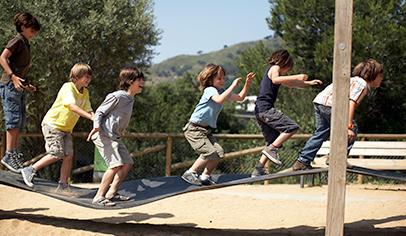Direct Donation Fundraising: How To Make It Work

Is your group considering a direct donation fundraiser? Here are the issues to think about before you get started.
With the growth in crowdfunding and online payment sites, direct donation fundraisers are easier than ever. But is a donation fundraiser right for your group? Before you decide to ask parents for cash, consider these factors.
When Donation Fundraisers Work Best
Different fundraisers work for different situations. Direct donation fundraisers, in which parent groups ask families to donate money directly to the parent group, tend to be most effective when they’re used to raise money for the following:
-
A specific project, such as raising money for new library books or playground equipment.
-
A short-term, immediate need or surprise expenses, like increased field trip costs.
-
A special occasion, such as a school’s 25th anniversary; to celebrate, a PTO might ask supporters to donate money to replace worn-out band instruments or to update the computer lab.
As with other types of fundraisers, direct donation programs work best when they are part of a balanced mix of fundraisers rather than the sole way a group raises money.
Join the PTO Today community (it's free) for access to resources, giveaways and more
Advantages and Drawbacks
Donation fundraisers have a high profit margin. In donation fundraisers, groups get to keep most of the money. The profit is not typically a full 100 percent, though; when parent groups accept online or credit card payments, they may be charged a fee for electronic transactions.
Direct donation fundraisers reach a specific audience. Donation fundraisers are typically targeted to school families and sometimes alumni, while neighbors and family friends will have less interest in contributing. Often, fewer people contribute to a donation fundraiser but tend to give more because of their close ties to the school or student.
Donation fundraisers are an easy way for long-distance supporters to contribute. Grandparents and other relatives living in other states can support the school by mailing a check or donating through a website.
Direct donation fundraisers may create the wrong impression about parent participation. If you’re not careful, parents might get the message that they can make a donation and be done with school participation for the year. It’s important to let parents know that you value their financial contributions as well as their time; let them know ways that they can support the parent group and the school on an ongoing basis.
Profits from donation fundraisers tend to drop over time. Typically, donations are high the first time groups run a direct donation fundraiser. When they are held year after year, however, their effectiveness tends to decrease.
Direct Donation Fundraiser Tips
We’ve collected advice from parent group leaders who have held direct donation fundraisers. Here’s what they had to say.
Be strategic. If your group hasn’t held a direct donation fundraiser before, you can’t be sure of how it will perform. It’s best to add a direct donation fundraiser to your existing fundraisers than to cancel your established fundraisers and replace it with a donation drive.
Emphasize that donations are tax-deductible if it’s true for your group. If your parent group is a federally recognized 501(c)(3) organization, donors may be able to deduct the value of their donation from income taxes. Consider holding a donation drive during fall semester, when people are making their final charitable donations for the year. Provide a nonprofit donation receipt that has the name of your organization, the date of the donation, and the amount given.
Offer an incentive. Inexpensive thank-you gifts like a keychain or a plastic cup with the school logo can increase participation in a donation fundraiser. You can also draw attention to your drive by offering a chance to win a higher-value prize, like a gym membership or a gift certificate to local amusement park. Ask businesses in your area whether they would be willing to donate a prize in exchange for public recognition.
Recognize donors. You can’t thank donors enough. Recognize people by name and provide an option for people who wish to give anonymously. List donors in your PTO newsletter, on a school bulletin board, on your website, and on signs displayed at family events.
Keep the door open to more fundraisers if needed. Avoid telling families that your direct donation fundraiser will be the only fundraiser for the year. If donations fall short, you want to be able to add more opportunities to raise money as needed.
To discuss direct donation fundraisers and many other parent group topics with other parent volunteers, join our closed group on Facebook, PTO & PTA leaders.





















